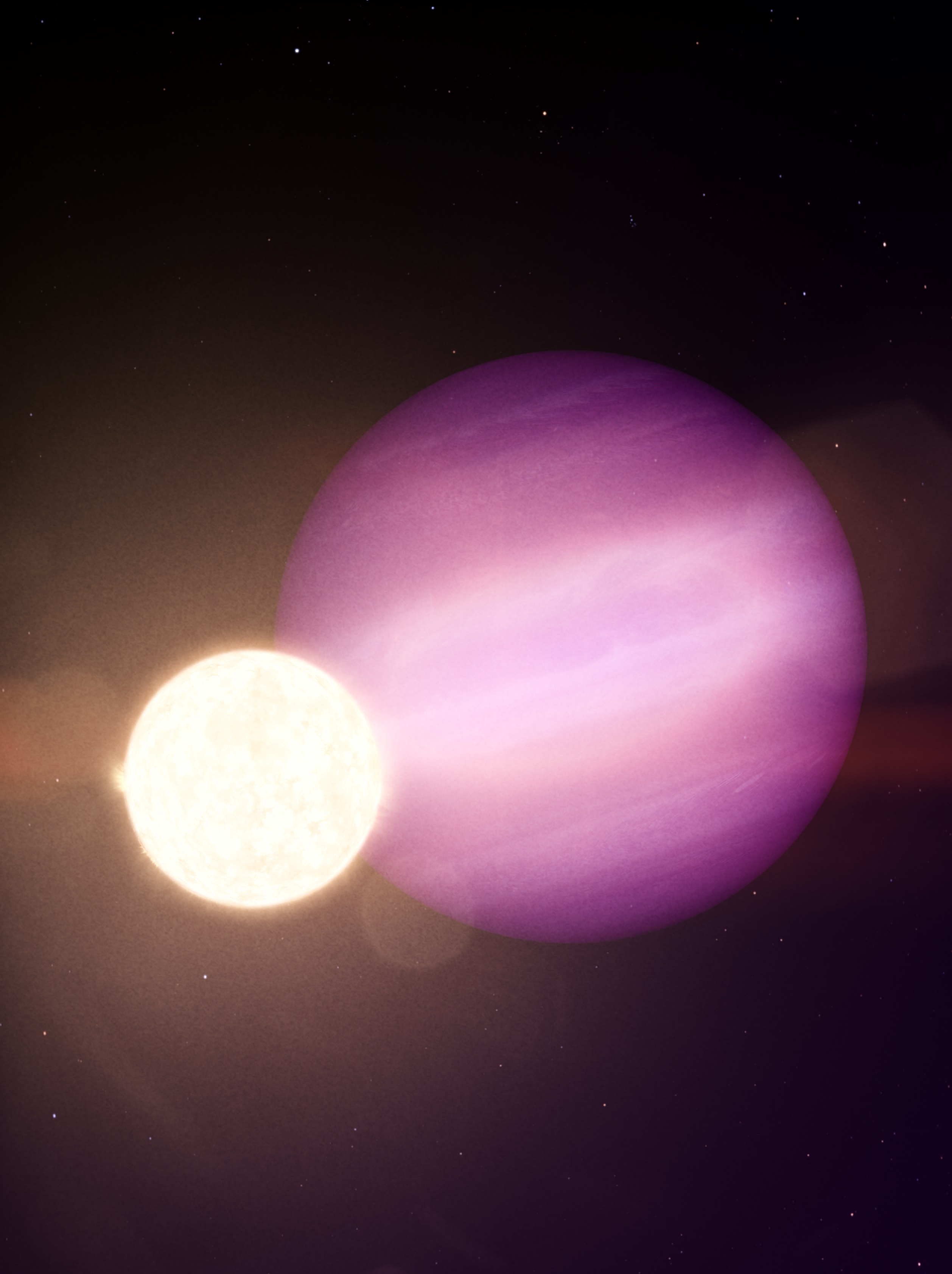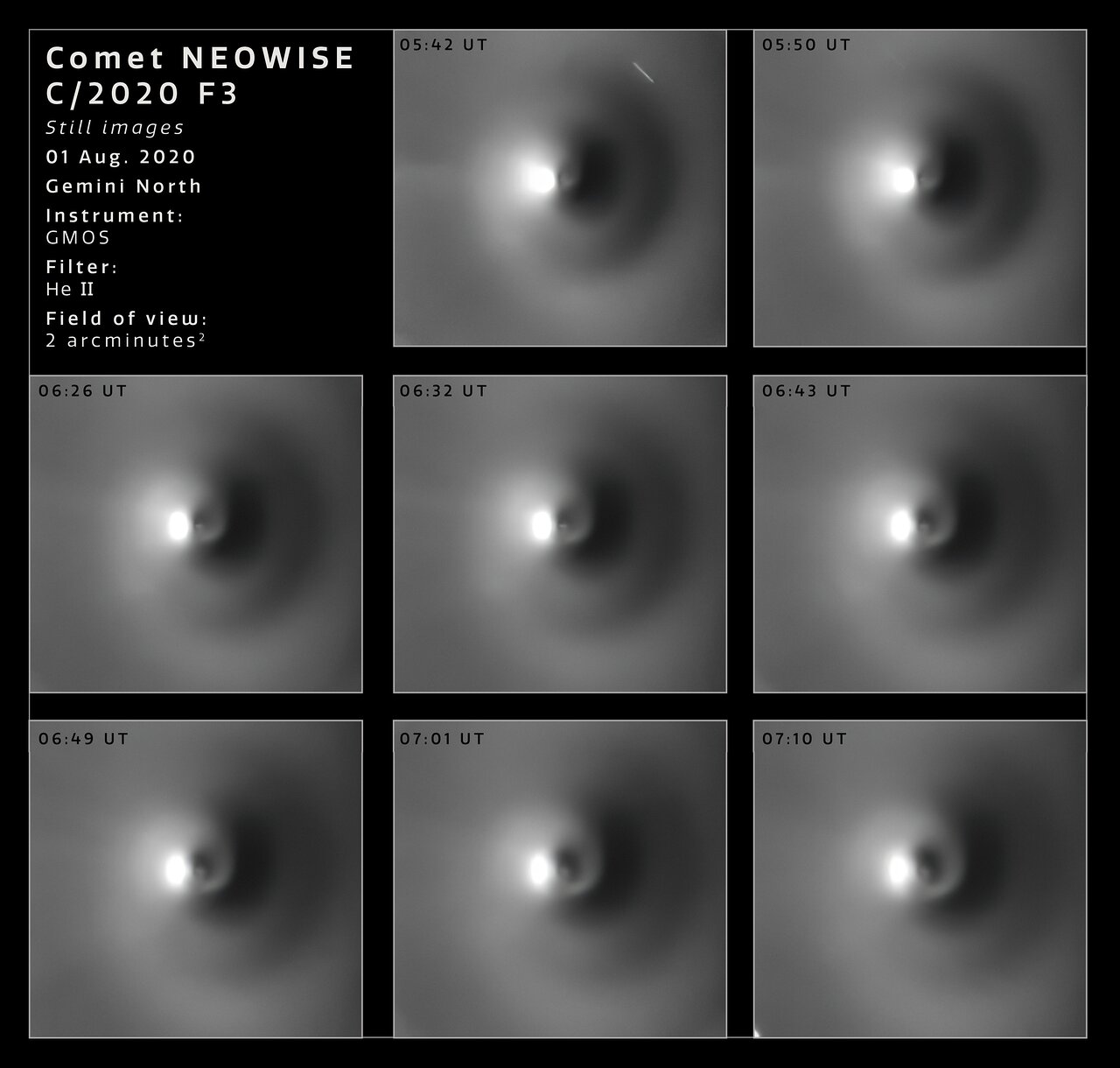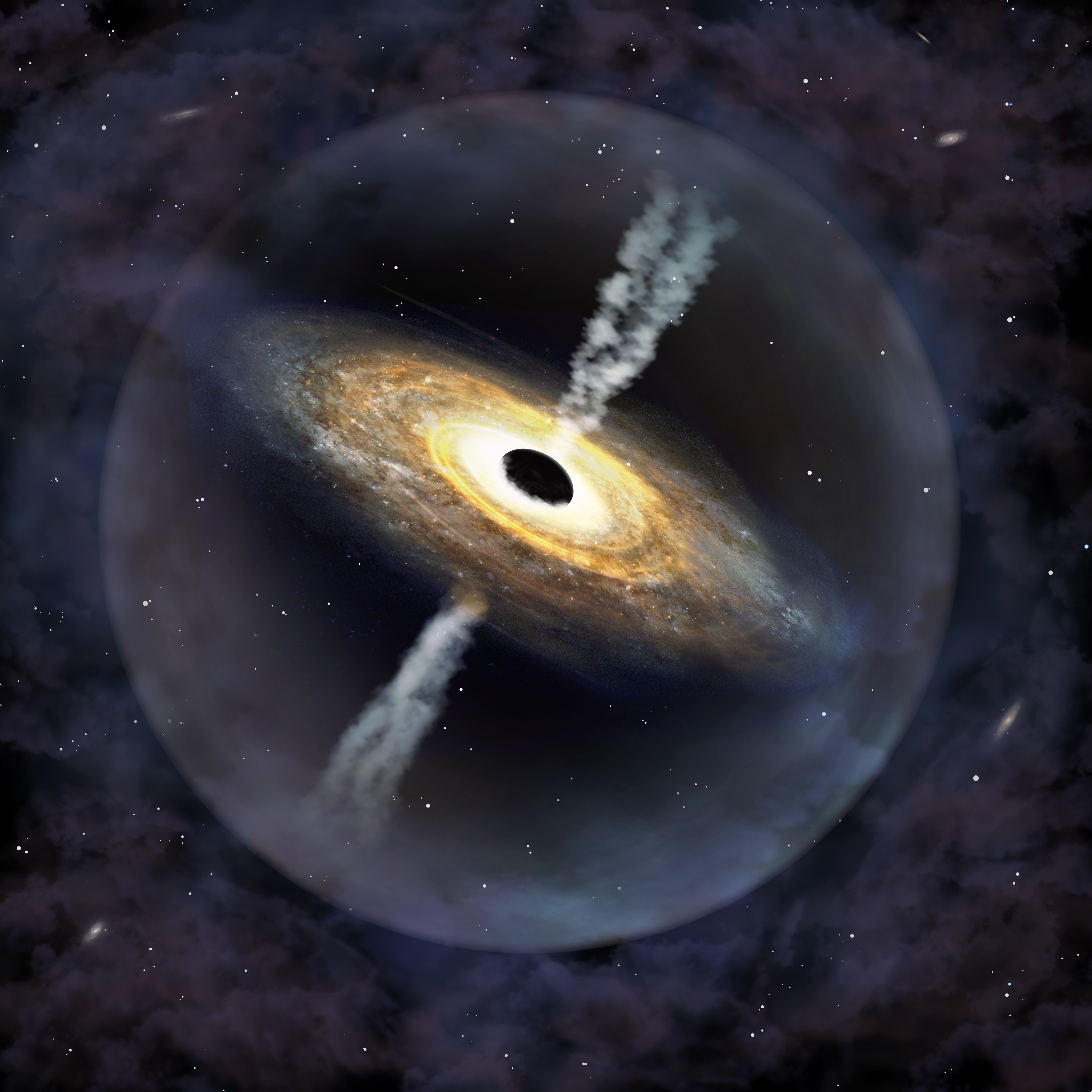While studying the aftermath of a long gamma-ray burst (GRB), two independent teams of astronomers using a host of telescopes in space and on Earth, including the Gemini North telescope on Hawai‘i and the Gemini South telescope in Chile, have uncovered the unexpected hallmarks of a kilonova, the colossal explosion triggered by colliding neutron stars. This discovery challenges the prevailing theory that long GRBs exclusively come from supernovae, the end-of-life explosions of massive stars.
Tag: Gemini Observatory
Record-Breaking Gamma-Ray Burst Possibly Most Powerful Explosion Ever Recorded
In the early-morning hours of today, 14 October 2022, astronomers using the Gemini South telescope in Chile operated by NSF’s NOIRLab observed the unprecedented aftermath of one of the most powerful explosions ever recorded, Gamma-Ray Burst GRB221009A. This record-shattering event, which was first detected on 9 October 2022 by orbiting X-ray and gamma-ray telescopes, occurred 2.4 billion light-years from Earth and was likely triggered by a supernova explosion giving birth to a black hole.

A White Dwarf’s Surprise Planetary Companion
For the first time, an intact, giant exoplanet has been discovered orbiting close to a white dwarf star. This discovery shows that it is possible for Jupiter-sized planets to survive their star’s demise and settle into close orbits around the remaining stellar ember, near the habitable zone. This foretells one possible future for our own Solar System when the Sun ages into a white dwarf.

A Dizzying Show by Comet NEOWISE
When Comet NEOWISE (C/2020 F3) sped through the inner Solar System during the middle of 2020, astronomers and the general public watched in awe as this “dirty snowball” shed gas and dust into space, producing a striking show visible to the naked eye. Close-up observations, led by Michal Drahus and Piotr Guzik of Jagiellonian University in Krakow, used the international Gemini Observatory, a Program of NSF’s NOIRLab, to observe the materials escaping from the comet over time. One set of observations, obtained on 1 August 2020 from the Gemini North telescope on Hawai‘i’s Maunakea, displays a spiraling stream of molecular gas that reveals the rotation of the comet’s nucleus. The timelapse sequence, compressed to only a few seconds, represents about one fifth of the approximately 7.5-hour rotation period of the comet.

Monster Black Hole Found in the Early Universe
Astronomers have discovered the second most distant quasar ever found, using the international Gemini Observatory and Cerro Tololo Inter-American Observatory (CTIO), Programs of NSF’s NOIRLab. It is also the first quasar to receive an indigenous Hawaiian name, Pōniuāʻena. The quasar contains a monster black hole, twice the mass of the black hole in the only other quasar found at the same epoch, challenging the current theories of supermassive black hole formation and growth in the early Universe.

Young Planets Bite the Dust
These orange swirls of dust are snapshots from the largest collection of sharp, detailed images of dusty debris disks around young stars — published this week by an international group of astronomers. The images — captured by the 8-meter Gemini South telescope using the Gemini Planet Imager — illustrate the variety of shapes and sizes that stellar systems can take during their infancy. Unexpectedly, the majority of these systems display evidence of planet formation.